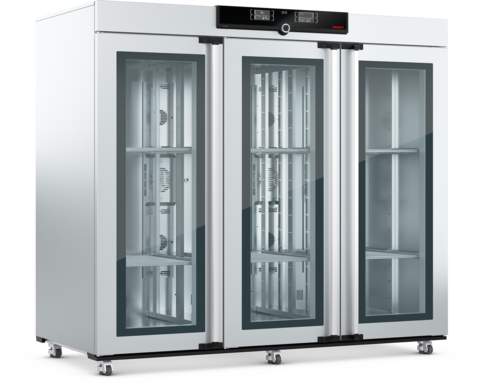Climate Chambers are enclosed areas which are utilized to test the impacts of certain environmental conditions on industrial items, materias, biological stuff and electronic equipment and components.
A climate chamber unnaturally creates conditions which are used for some tests and these machines, materials, devices etc are kept in that environment. Sometimes climate chambers are used to speed up the impacts of disclosure to the environment, and many times at unexpected conditions.
Purpose and Uses of Climate Chambers:
- To get the environmental impacts on the test samples
- As formation of test samples for future physical or chemical tests
- As climate conditions to perform testing of samples
Climate chambers are available in many different sizes, they are built from 20 to 400,000 liters. They can be in the size of a small room or even smaller which can easily be placed onto a test apparatus or a machine.

This is how the Climate Chambers work:
The operating principle of the environmental chamber is that all conditions can be managed manually through a variety of mechanical processes.
In a climate chamber the conditions can be arranged manually through some mechanical methods.
Temperature is managed by an electric heater for heating purpose and for cooling, a refrigerated unit is used.
Researchers use a spray of salt solution which they put inside the chamber through a nozzle, and its purpose is to simulate the corrosive impact of the sea, end result a decent amount of mist covering the entire item.
To create a humid environment inside the test chamber, two methods are used, one is to evaporate water through a source of heat and other is to use ultrasound technology.
Types of Climate Chambers:
There are various special types of Climate Chambers, and they are designed specifically after considering the requirements for the tests. Some of them are as follows;
Constant climate chamber: this is used to create continuous temperature and humidity conditions for the tests.
Humidity chamber: this is useful in the testing of items which require a humid environment including rain and condensing humidity tests.
UV testing chamber – this type of chamber creates a false accelerated sun exposure
Salt spray testing chamber – counterfeits corrosiveness of environment.
Altitude testing chamber – counterfeits decreased and normal ambient pressure; appropriate for testing the integrity of packages
Vibrations testing chamber – Counterfeits vibrations generating while transporting in various ways by using a servo-hydraulic system. They can create similar vibrations that are felt on aircraft or delivery vehicle.
Reference Link(OriginallyPosted : https://ziebaq.wordpress.com/2022/07/05/what-are-climate-chambers/
Comments
Post a Comment